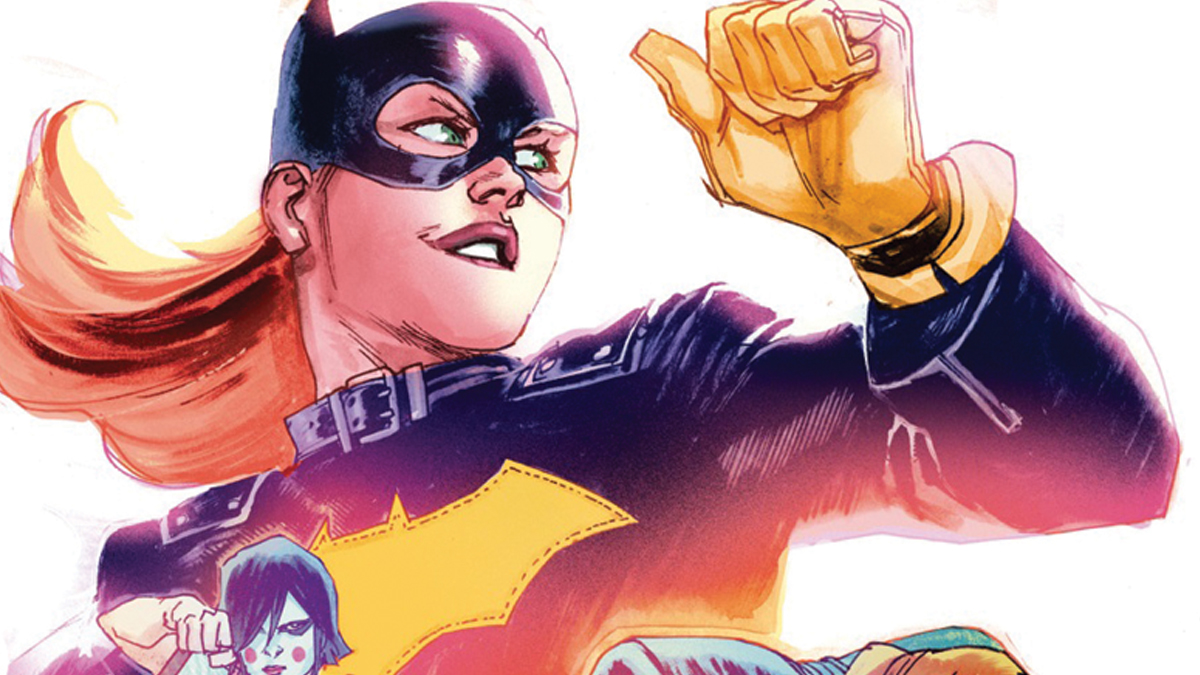feature
Picture This!
The Versatility of Graphic Novels in Science Class
Graphic novels are everywhere! The Young Adult Library Services Association (YALSA) began “Great graphic novels for teens” lists in 2009, and graphic novels have only increased in visibility since then (MacDonald 2019). The New York Times reinstated their graphic novels bestseller list in 2019 (New York Times 2019). In 2020 the Newbery Award winner was a graphic novel, New Kid by Jerry Craft, marking the first time a graphic novel has won since the award’s inception in 1922 (ALA n.d.; Yorio 2020).
The popularity of graphic novels is not surprising. They are colorful and engaging, marrying text to images, with diverse characters doing everything from struggling with their tennis game to solving engineering problems to battling villains from the Multiverse. Graphic novels promote both language and scientific literacy. They create spaces for students to think about science in exciting ways. This article provides science teachers with a how-to guide to incorporate graphic novels into their classes at various stages of the lesson (or unit) and capitalize on the versatility and ubiquity of this resource.
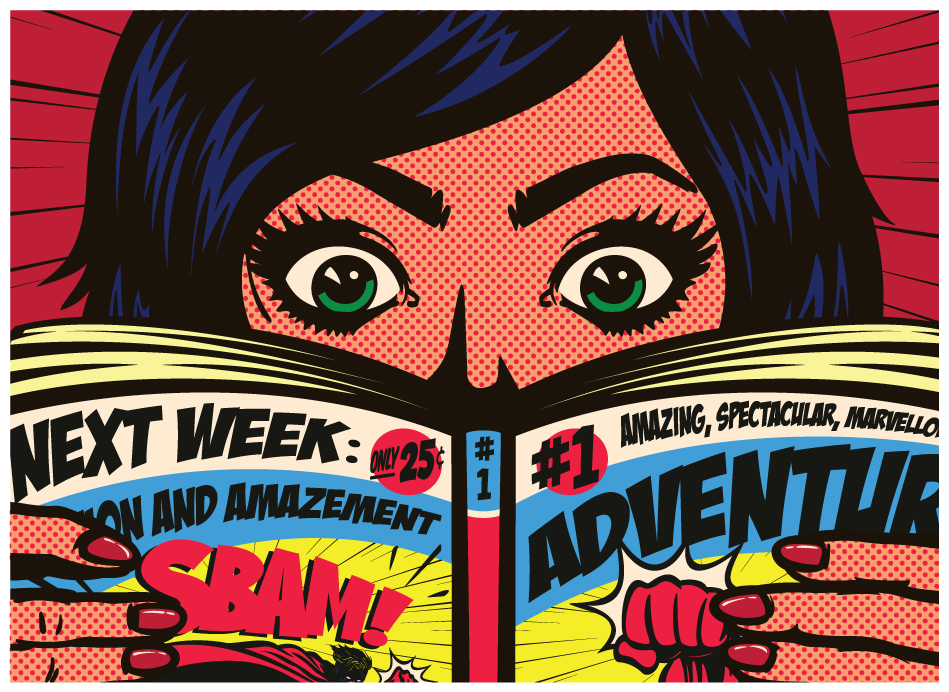
What Is a Graphic Novel?
What do we mean when we use the term graphic novel? Let’s clarify. For some, the term graphic novel implies there is a beginning, middle, and end to the storyline like one would see in a standard novel (Rossen 2019). Another term, comics, describes the medium and graphic novels represent one of those formats. Students use these terms interchangeably and while not all of the examples I include in this article would technically fit the label of graphic novel, I will be using that term throughout for consistency. The ways in which these texts can be used in the classroom are the same, regardless of the terminology. Teachers and students new to graphic novels are encouraged to read Abel’s (2002) informative graphic, which explains more about graphic novels and how to read them.
The case for integrating graphic novels
As teachers we want to find effective strategies to engage our students in science class—that engagement leads to learning. Using picture books with students of all ages activates visual thinking and helps make abstract concepts concrete, especially in areas like science (Massey 2015). This is especially important when working with English language learners or struggling readers because the images can assist with text decoding. In their study, Spiegel et al. (2013) found that students who read comics about a science topic were five times more likely to want to read more than those students who read a traditional essay. The comics had the largest effect on students with low science identities and engaged them more.
Students need exposure to both literature and informational texts (NGAC and CCSSO 2010). For this reason, graphic novels are incorporated into lists alongside nonfiction and expository readings. Using graphic novels in the science classroom serves double duty—they engage students and support literacy skill development. The English Language Arts (ELA) standards have a specific section devoted to such interdisciplinary skills: science and technical subjects. In conjunction with the disciplinary core ideas from the Next Generation Science Standards (NGSS Lead States 2013), teachers can create an enriching interdisciplinary environment within their own classroom or reach across the hallway for collaborations with the ELA teachers.
Teachers can promote language literacy by weaving ELA standards into science class. For example, teachers can discuss misconceptions and inaccurate scientific information (CCSS.ELA-LITERACY.RST.11-12.1), particularly in graphic novels from the fantasy or science fiction genres. Have students identify where the texts align with the laws of nature and where the author takes creative liberties to make the story more exciting. Teachers scaffold the development of students’ critical thinking skills as they compare and contrast inaccuracies presented in the text and what they are learning in science class. Teachers can also use graphic novels as supplemental sources to help students better understand a concept or phenomenon (CCSS.ELA-LITERACY.RST.11-12.9). For example, some graphic novels construct a fictional setting around accurate scientific content, which can help students see the application in action.
Selecting graphic novels
For the purpose of this article, I will be using the term graphic novel to refer to bound issues containing stories with both images and text. I will leave the rest of the comic v. graphic novel debate to those in the field (see “What Is a Graphic Novel?” for a fuller definition).
When deciding which graphic novels to use, the best resources are students and the school librarian or media specialist. All of them can share what is popular and engaging. This is a great opportunity for the students who are already avid graphic novel readers to show off their expertise and feel empowered! Take their insights and ideas into consideration when choosing graphic novels. Meanwhile the colleague with a background in library science or media will be able to direct teachers to quality graphic novels and supplemental resources and address any questions about age-appropriate content or themes.
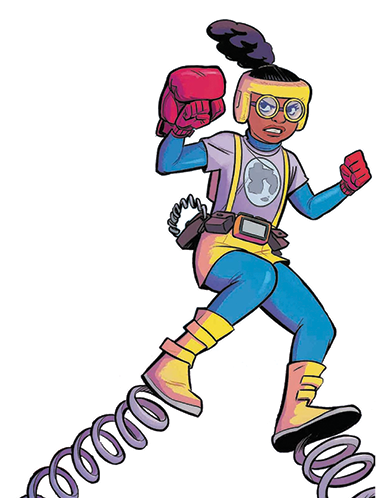
Teachers take this opportunity to learn about students’ interests to guide which graphic novels to select. Examples of questions to ask students include:
- What do they like to do outside of school?
- What superheroes and characters are they interested in?
- What books do they read and are graphic novels included in that list?
- What genres do they prefer to read?
Organizations that vet young adult literature offer more information about quality graphic novels. YALSA reviews publications and culls the Great Graphic Novels for Teens list and a condensed list called the Top Ten Graphic Novels for Teens each year. The William C. Morris YA Debut Award celebrates first-time authors and the Michael L. Printz Award recognizes excellence in young adult literature with many graphic novels winning or being nominated. The Eisner Award winners are the “Oscars” of graphic novels, with more than two dozen categories. And more recently in 2018, Pop Culture Classroom started the Excellence in Graphic Literature Awards with nine different categories honoring the best and brightest titles and promoting the educational value of graphic novels. Links to these lists and awards are provided in the Online Connections section.

Representation matters
As educators we have a responsibility to make our classrooms culturally relevant and culturally responsive. Incorporating books that reflect the different identities of students is one concrete approach to creating a more culturally inclusive classroom (Hickey and Hopenwasser 2013; Leahy and Foley 2018). Therefore, when choosing graphic novels to use in the science classroom, teachers need to select texts that reflect the interwoven cultural, ethnic, racial, and gender identities that students bring with them. Bishop (1990) calls such books mirrors, because they allow students to see their lives and experiences reflected back at them. Contemporary movements like We Need Diverse Books (WNDB) and researchers in children’s literature continue that work by promoting authors of diverse backgrounds and a rich variety of books where all children can find themselves in their pages (Boyd, Causey, and Galda 2015; WNDB n.d.).
The graphic novels highlighted in the article and the suggestions in Table 1 (see Online Connections) were chosen with inclusivity in mind. These characters are as different as they are complex, just like the students in our classrooms. Teachers need to get to know the students in their classes, then select and offer rich, diverse graphic novels that reflect students’ intersectional identities.
Integrating graphic novels at any stage of the lesson
There are many different ways to incorporate graphic novels in the science classroom, from the beginning to the end of a lesson or unit. First, teachers need to decide which standards they plan to address and the accompanying learning objectives. Then select the most effective place within the instruction to include a graphic novel. The following sections describe ways to integrate graphic novels across any stage of the BSCS 5E Instructional Model (Bybee et al. 2006) to demonstrate and highlight their versatility. Teachers can incorporate these instructional strategies from any of the 5Es as fits their own style and context. The implementation is broad enough to fold into any science discipline. A list of graphic novels featuring diverse protagonists aligned to specific Disciplinary Core Ideas is presented in Table 1.
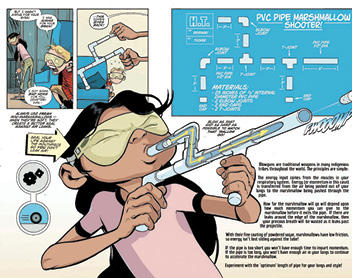
Engage
The goal of the engage component is to hook the students into learning. Capture the students’ attention through a question, problem, event, or natural phenomenon (Bybee 2014). Graphic novels by their nature are intriguing. They are colorful, full of pictures, word bubbles, and funny sounds coming out of the characters’ mouths. Many recent publications are culturally diverse, offering traditionally underrepresented students the opportunity to see themselves in the texts and majority students the opportunity to connect with different characters and perspectives. Plus, diverse graphic novels create a more inclusive classroom by connecting to students’ experiences, a key aspect of a culturally relevant classroom (Ladson-Billings 1995).
To start the lesson or unit, have students silently read a passage from a graphic novel or read out loud a passage and have other students follow along. Use a segment from a graphic novel as a discussion starter or to pose a problem. Ask the students questions about what they read and observed in the images and text.
The comic Moon Girl and Devil Dinosaur (Montclare, Reeder, and Bustos 2016) tells the story of 9-year-old Lunella Lafayette in New York City. She boldly proclaims she is “…the smartest there is” (Montclare et al. 2017). She loves science and hates science class, but not for the reasons one would think. Science class is not challenging enough! All students can relate to not liking a class for one reason or another and feeling out of place. Using advanced time travel technology, Lunella accidentally releases a large red dinosaur into her world. Together they team up as Moon Girl and Devil Dinosaur and find their niche.
Before reading, pose a pre-reading question to students. Have them share their thoughts with a classmate using the classic Think-Pair-Share as a way to develop science discourse. After reading, ask students to read a segment about one of Lunella’s inventions, such as her spring-loaded boxing glove, to start a conversation about the ethics of the engineering products we design and develop (HS-ETS1-1, HS-ETS1-3). Discuss a STEM problem she faces, such as how to manage the Inhuman gene activation in her DNA after being exposed to Terrigen Mist, and the implications of the solution. Push students to critique or defend Lunella’s design solutions based on evidence, constraints, and ethics; a core skill of the science and engineering practice of Engaging in Argument from Evidence (NGSS Lead States 2013).
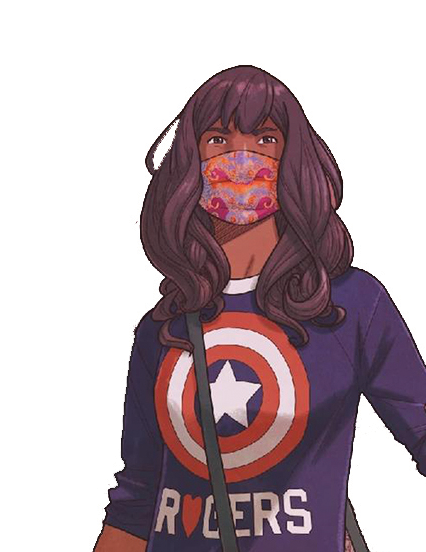
Explore
In the Explore phase students begin to construct their knowledge about a topic. Students are asked to explore phenomena through hands-on experiences or manipulatives. Both fiction and non-fiction graphic novels have activities in them that students can try out or replicate to check the accuracy of the science going on. Graphic novels certainly get creative in how they portray the laws of nature!
Howtoons: Tools of Mass Construction (Griffith and Dragotta 2014), offers a wide range of activities and projects in what the authors call a curriculum of toys. Through hands-on activities, readers delve into projects that involve engineering design and science concept development. These projects can also serve in Makerspaces. Most of the materials can be found in the lab, at home, the technical education classroom, or the hardware store. Choose one of the stories that accompanies the activity to read and ask students to put together the toy. Then have them think about the real-world applications. Or test and discuss how to improve the project to make it even better. The book is organized into chapters addressing topics related to energy, the design process, mathematics, art, engineering, play, and general science. For example, the “Ice Dreams” (Griffith and Dragotta 2014, pp. 176–184) story shows Tucker and Celine against the backdrop of Mongolia to explain the origins of ice cream, followed by an experimental procedure to make ice cream. A tasty activity to review concepts about the release and absorption of thermal energy in reactions (MS-PS1-6) and get students constructing ideas for how to calculate the change in energy in the components of a system as energy flows in and out (HS-PS3-1). Howtoons contains projects for students to tinker and experiment and can act as scaffolds and springboards for the Science and Engineering Practice of Planning and Carrying Out Investigations (NGSS Lead States 2013).
Explain
When it comes time for the Explain phase, make a graphic novel the co-teacher to assist in introducing scientific phenomena or technological concepts. Resources beyond the traditional teacher-led lecture offer excellent explanations (Bybee 2014). Many of the nonfiction graphic novels provide histories of scientific discoveries or the stories of famous scientists. Other books, like The Manga Guide series, offer up scientific information one might find in a textbook woven into a story involving high school students or young adults. These textbook-graphic novel hybrids present accurate concepts with a fictional storyline surrounding the information.
In The Manga Guide to Physics (Nitta, Takatsu, and Trend-Pro Co., LTD 2009) Megumi Ninomiya is a high school student struggling with physics and her tennis game. Her classmate and Physics Olympics Silver Medalist, Ryota Nonomura, helps her understand mechanical concepts in physics. Ask students to read one of the sections or chapters related to the topic they are studying. Students can complete one of the step-by-step practice problems that concludes each section to solidify their understanding. For example, the third chapter addresses momentum (HS-PS2-2), complete with diagrams, equations, and practice problems related to Megumi’s tennis game. Students apply techniques of algebra and unit conversions to determine the solution, key components of the Science and Engineering Practice of Using Mathematics and Computational Thinking (NGSS Lead States 2013).
Another great resource for disseminating scientific information interlaced in a fictional story is the World of Viruses series developed by the University of Nebraska–Lincoln (n. d.). The issues address everything from measles to influenza to human papillomavirus (HPV). Using anthropomorphized viruses, these issues support learning about how the body responds to various infections (HS-LS1-3) or how a certain virus can spread and affect the population, followed by mathematical modeling of the rate of infection (HS-LS2-1). Paper copies can be purchased through major distributors or available for free on the App Store. For schools with 1:1 devices, these graphic novels can be efficiently acquired and read on students’ tablets. With most of the stories being under 20 pages, these shorter graphic novels are a great way to not only explain a concept but do so without overwhelming students. Length is something to keep in mind with English language learners and struggling readers. Shorter texts will be more manageable while still addressing the content.
If, instead, the goal is for students to take responsibility for the explanation, then they can assemble their ideas in graphic novel form to teach their classmates. Drawing or interpreting pictures activates more parts of the brain and helps the learning stick (Hardiman 2012). It engages students in those higher-level domains of application and synthesis. Plus, pairing pictures with text relaxes some of the pressure struggling writers or English language learners might experience, and they can use images to show more of what they know. Students can put together their ideas into a format like the one sheet comic (Hetland and The Center for Cartoon Studies, n.d.).
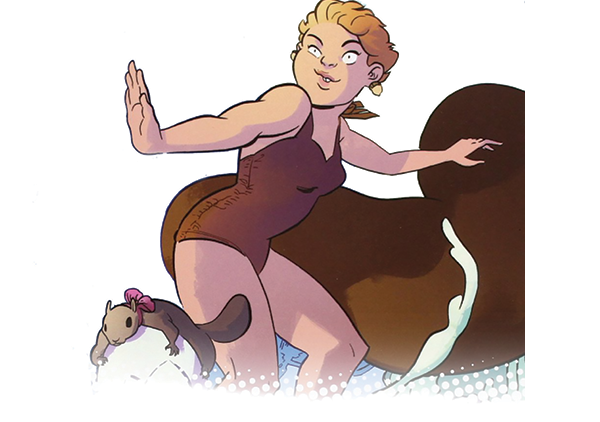
Elaborate
In the Elaborate phase, students extend and apply their conceptual understanding. Bybee (2014) recommends teachers choose and implement “…activities that are a challenge but achievable by the students” (2014, p. 11). This often involves students transferring their knowledge and skills in unique situations. Students might read a graphic novel to extend their understanding, then use the graphic novel as a topic for discussion.
Ask the students to talk about the accuracy of the science concepts and debunk the inaccurate concepts in the graphic novel. For the more dramatic students, urge them to role play a scene, but act it out in a way that is more scientifically accurate. Being able to cite specific evidence from the text to support one’s analysis and note any inconsistencies with the author addresses a key ELA standard (CCSS.ELA-LITERACY.RST.11-12.1) under the science and technical subjects category. For students who enjoy writing over presenting, make this phase an opportunity for them to write the next issue or revise an existing ending of a graphic novel as a way to apply new science concepts.
The Unbeatable Squirrel Girl is an excellent series to encourage students to anticipate what is going to happen next. So many of her adventures involve cliffhangers, creative problem solving, collaboration, and a growth mindset, all while keeping a positive attitude. Hold back the ending from students and have them apply their skills to help Squirrel Girl and her friends out of a tricky situation. For example, how would students get Squirrel Girl and her friends out of the real steel escape room they are trapped in (North and Henderson 2018)? If they predict that Squirrel Girl uses her strong squirrel jaws to gnaw through, ask them to calculate the force her jaw needs to apply to cut through steel (HS-PS2-1) or investigate more about the properties of steel and why it is so strong (HS-PS2-6). Support students to construct explanations for what happened, citing science concepts or mathematical calculations to link to their claims. In this way teachers foster development of the Science and Engineering Practice of Constructing Explanations and Designing Solutions (NGSS Lead States 2013).
Squirrel Girl has many nemeses that put her in precarious situations with her roommate Nancy Whitehead. Ask students to genetically engineer a new nemesis for Squirrel Girl and Nancy to contend with in the ultimate battle (HS-LS3-2). Students have to think about the environmental factors and genetic variation involved in the nemesis’ abilities and the skills Squirrel Girl needs to outwit them in their confrontation—a great opportunity for creative problem solving and inheritance! Remember to design a Deadpool’s Guide to Super Villains card for Squirrel Girl to reference when she meets her new match-up (North and Henderson 2019)!
Evaluate
Once students arrive at the Evaluate phase, they are ready to show the teacher what they know and what they have learned so far. Of course, formative assessment has been happening throughout; the goal of this phase is to intentionally assess. The teacher develops an understanding of what students have learned, and students show what they know. The key is that whatever the assessment, it aligns with the objectives in the lesson or unit.
Storytelling is powerful and affords students the opportunity to get creative. Have students create their own graphic novels to explain concepts. Students can work alone with the advantage of having complete creative control over the final project. Or students can work in pairs or groups of three if they want to brainstorm and generate more ideas, then each student plays to their specific strengths in the design process. Encourage students to use their imaginations as they design characters, a backstory, and the setting. For long-term projects students can create a multipage issue by hand with colored pencils and paper, or on the computer if they are skilled with online design programs. For short-term projects, consider the one-page comic designed by Beth Hetland and The Center for Cartoon Studies (n.d.). Students fold and cut a single sheet of paper into an eight-page booklet. Regardless of the format, both low-tech and high-tech options allow students to demonstrate their knowledge.
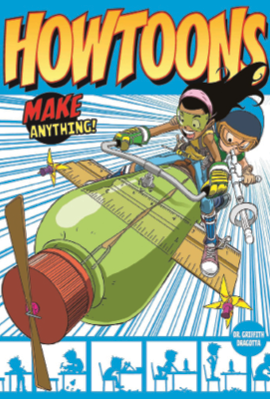
When thinking about how to assess the final product, work with students to construct criteria for the ideal graphic novel. Allow students to provide input on style, color, structure, number of panels, creativity, presentation, and length. Discuss what makes a graphic novel exciting and interesting to read. Support students in making theirs engaging based on the ideas generated in class. Talk about the different types of genres and subgenres (e.g., historical, fantasy, science fiction, romance, mystery, steampunk, dystopian, contemporary) and guide students to the setting in which they want their story to take place. For reference materials, lead students to other graphic novels they have read in or outside of class for techniques to make their stories hook the reader. Teachers should take the lead on choosing the science objectives to be addressed. Examples of guiding questions when drafting criteria to assess content knowledge include:
- Do the graphics accurately display the science concepts?
- Does the text include a step-by-step depiction of the science concept?
- Do the characters use critical-thinking or problem-solving skills found in the science and engineering practices?
Embed time in the lesson for students to share their graphic novels and comics with each other. Just like scientists have conferences to share their research, members of the comics world come together at comic book conventions (i.e., San Diego Comic-Con) to share their stories. In these spaces, various forms of science fiction/fantasy entertainment are showcased, with the primary medium being comic books. Attendees often dress up in costume as their favorite characters. The convention provides an opportunity for everyone to come together to learn more about upcoming comics, attend events, meet authors and other famous icons.
Teachers and students can put together their own mini comic convention; a great way for public sharing to hold students accountable and have them participate in activities that address the Science and Engineering Practice of Obtaining, Evaluating, and Communicating Information (NGSS Lead States 2013). Invite students from other classes, staff, families, and members of the community to the convention. Students set up tables around the classroom or the gym to showcase the graphic novel they have created. Attendees walk around asking questions of the student-authors to learn about the new publications. Students engage in cross conversations with the expectation that they are to teach the attendees about the science going on in their story while promoting their graphic novels. Teachers can make extra copies of the graphic novels for students to share with attendees or swap with other students in their class. Close the event with an end of convention ceremony, just like a real comics convention, complete with awards.
No matter where a teacher chooses to integrate them, graphic novels will add adventure, intrigue, cultural relevance, and creativity to just about any science lesson! By harnessing students’ natural interest in graphic novels and choosing texts with diverse characters, we can foster connections in biology, chemistry, physics, computer science, mathematics, and more! ■
Online Connections
Table 1. Graphic Novels Aligned to Disciplinary Core Ideas: https://bit.ly/3t8RYIf
Young Adult Library Services Association (YALSA): http://www.ala.org/yalsa/
YALSA’s Great Graphic Novels for Teens List: http://www.ala.org/yalsa/great-graphic-novels
William C. Morris YA Debut Award: http://www.ala.org/yalsa/morris-award
Michael L. Printz Award: http://www.ala.org/yalsa/printz-award
Eisner Awards: https://edubirdie.com/wp-content/uploads/2024/02/Eisner-Awards-Current-Info.pdf
Excellence in Graphic Literature Awards: https://classroom.popcultureclassroom.org/programs/excellence-in-graphic-literature/
Amelia Bloomer Project (AMP): https://ameliabloomer.wordpress.com
The One-Sheet Workshop: http://onesheetworkshop.blogspot.com
NSTA Loves Comics
Check out these other articles published across NSTA’s journals about using comics in the science classroom.
Ardasheva, Y., J. Bowden, J. Morrison, and T. Tretter. 2015. Comics relief: Using comics and illustrated trade books to support science learning in first-year English language learners. Science Scope 38 (6): 39–47.
Gooden, K. 2020. Superhero physics: Eighth graders learn physics concepts from superhero-inspired lessons. Science Scope 43 (5): 32–41.
Henning, A.J., B.A. Whitworth, and A.H. MacPherson. 2020. Comics in the classroom: What’s at the center of the solar system? The Science Teacher 87 (8): 37–42.
Rachelle Haroldson (rachelle.haroldson@uwrf.edu) is a Clinical Associate Professor and Master Teacher of the STEMteach program at the University of Wisconsin–River Falls in River Falls, WI.
5E Assessment Disciplinary Core Ideas English Language Learners Inclusion Instructional Materials Interdisciplinary Literacy NGSS Science and Engineering Practices Teaching Strategies



